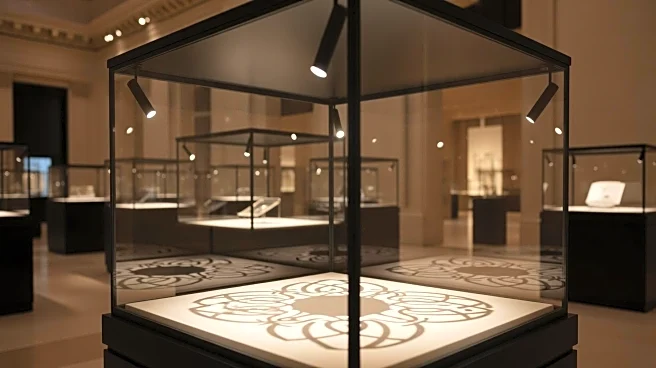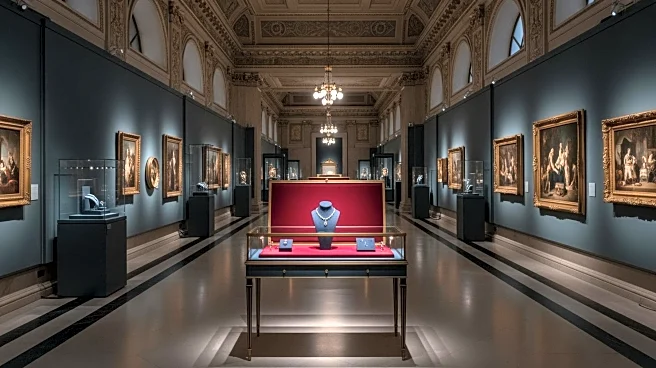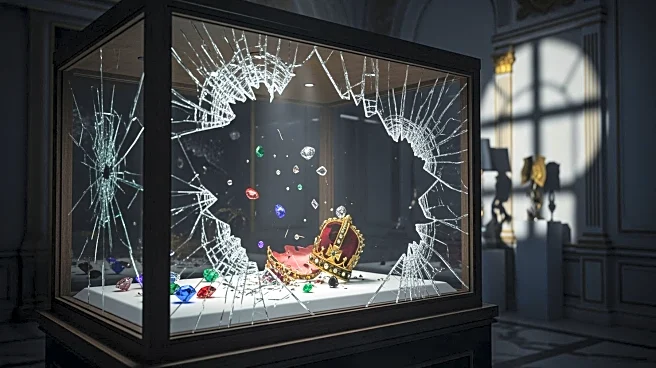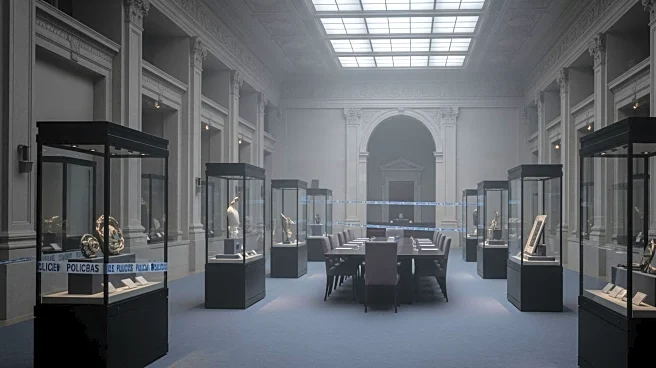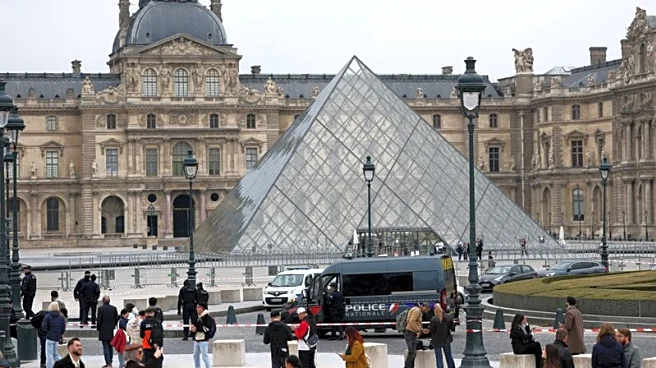What's Happening?
A highly organized theft occurred at the Louvre Museum in Paris, where a group of thieves executed a swift seven-minute heist, stealing jewels of immense cultural and historical value. The robbery took
place on a Sunday morning, with the suspects using a lift platform mounted on a truck to access a second-floor window of the museum's Galerie d'Apollon. Armed with small chainsaws and box cutters, the thieves smashed display cases and fled the scene on Yamaha TMax scooters. French Interior Minister Laurent Nuñez described the operation as a major and highly organized effort, involving three to four suspects. The museum was evacuated and will remain closed to preserve evidence for the ongoing investigation.
Why It's Important?
The theft at the Louvre Museum underscores the vulnerability of even the most secure cultural institutions to well-coordinated criminal activities. The stolen items, including the crown of Empress Eugénie, hold significant heritage value, representing a loss not only in monetary terms but also in cultural heritage. This incident highlights the need for enhanced security measures in museums worldwide, especially those housing items of national and historical importance. The heist also raises concerns about the potential for similar crimes, as it follows a series of recent robberies targeting French museums, including the theft of gold samples and porcelain works. The impact of such thefts extends beyond the immediate loss, affecting cultural preservation and international perceptions of security in France.
What's Next?
Authorities in Paris have mobilized all central police units to track down the suspects involved in the Louvre heist. A judicial investigation is underway, with investigators exploring various leads, including the possibility of foreign interference. The museum will remain closed to facilitate the investigation, and security protocols are likely to be reviewed and strengthened in response to the incident. The French government may also consider broader measures to protect cultural assets across the country, potentially involving international cooperation to prevent the trafficking of stolen artifacts.
Beyond the Headlines
The Louvre heist may prompt a reevaluation of how cultural institutions balance public access with security. As museums strive to remain open and accessible to the public, they face the challenge of protecting invaluable artifacts from increasingly sophisticated criminal networks. This incident could lead to discussions on the ethical implications of displaying high-value items and the responsibilities of cultural institutions in safeguarding heritage. Additionally, the theft may influence future policies on cultural preservation and international collaboration in recovering stolen artifacts.
